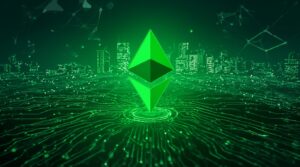What is Citizen Science ? Citizen science is scientific research conducted, in whole or in part, by non-scientists, often in collaboration with or under the guidance of professional scientists. It involves the public voluntarily participating in the scientific process, including tasks like data collection, analysis, and interpretation.
Citizen science works best with tools that are affordable, portable, and easy to use. The right gadgets help you collect, record, and share data—whether tracking weather, monitoring wildlife, or analyzing your environment.
Here’s a list of top picks for 2025, focusing on practical use, portability, and value.
Top Gadgets for Citizen Science
| Gadget Name | What It Does | Why It’s Useful for Citizen Science | Price Range |
| Rocketbook Smart Notebook | Reusable notebook with cloud sync | Take field notes, digitize instantly | Around £18 |
| Basus Blade 2 Power Bank | Ultra-thin 12,000mAh, 65W power bank | Keep devices charged in the field | About $49-$79 |
| SanDisk Creator Phone SSD | Portable phone SSD for data backup | Store large photo/video datasets | About $109.99 |
| Bee Pioneer Memory Device | Wearable that records & transcribes speech | Record observations, transcribe notes | Around $99.98 |
| NAQI Neural Earbuds | Earbuds for hands-free tech control | Operate devices while collecting data | Coming soon |
| XGIMI MoGo 2 Pro Projector | Portable projector for group presentations | Share findings with teams in the field | About $299 |
Why These Gadgets Stand Out
- Rocketbook Smart Notebook
Wipe-clean pages and instant cloud uploads mean you never lose field notes. Scan sketches, measurements, or wildlife logs directly to your phone or cloud storage. - Basus Blade 2 Power Bank
Ultra-slim and powerful. Charges your phone, tablet, or even a small laptop multiple times—crucial for long days outdoors or remote data collection. - SanDisk Creator Phone SSD
Instantly back up high-res photos, audio logs, or video evidence from your phone. No worries about running out of phone storage during surveys or expeditions. - Bee Pioneer Memory Device
Wearable device that records and transcribes conversations. Perfect for interviews, group discussions, or logging observations without pen and paper. - NAQI Neural Earbuds
Control devices hands-free with subtle facial or head movements. Useful for operating equipment while your hands are busy with samples or instruments. - XGIMI MoGo 2 Pro Projector
Portable projector for sharing data, images, or findings with teams in the field or at community meetings. Makes group learning and collaboration easier.
Actionable Tips
- Combine tools: Use a smart notebook for notes, a power bank to keep everything charged, and a phone SSD for backing up your data after each session.
- Test before fieldwork: Try syncing your notebook and SSD at home to avoid tech issues in the field.
- Think about hands-free: If you’re often multitasking, gadgets like the wearable recorder or neural earbuds can streamline your workflow.
Key Takeaways
- Portability and battery life are crucial for fieldwork.
- Data backup prevents loss of valuable observations.
- Reusable and cloud-connected tools save time and reduce waste.
- Wearables let you record and control devices without stopping your work.
FAQs
Q: Which gadget is best for recording field notes?
- A: The Rocketbook Smart Notebook lets you write by hand, then scan and save notes to the cloud for easy access and sharing.
Q: How do I keep my devices powered during long field days?
- A: The Basus Blade 2 Power Bank is slim, powerful, and can charge multiple devices, including laptops.
Q: What if I need to back up lots of photos or video?
- A: The SanDisk Creator Phone SSD connects to your phone for instant, portable data backup.
Q: Are there tools for hands-free data collection?
- A: Yes, the Bee Pioneer wearable records and transcribes audio, and NAQI Neural Earbuds let you control devices via head or facial movements.
Which gadget will make your next citizen science project easier?
How could you combine these tools for even better results?










